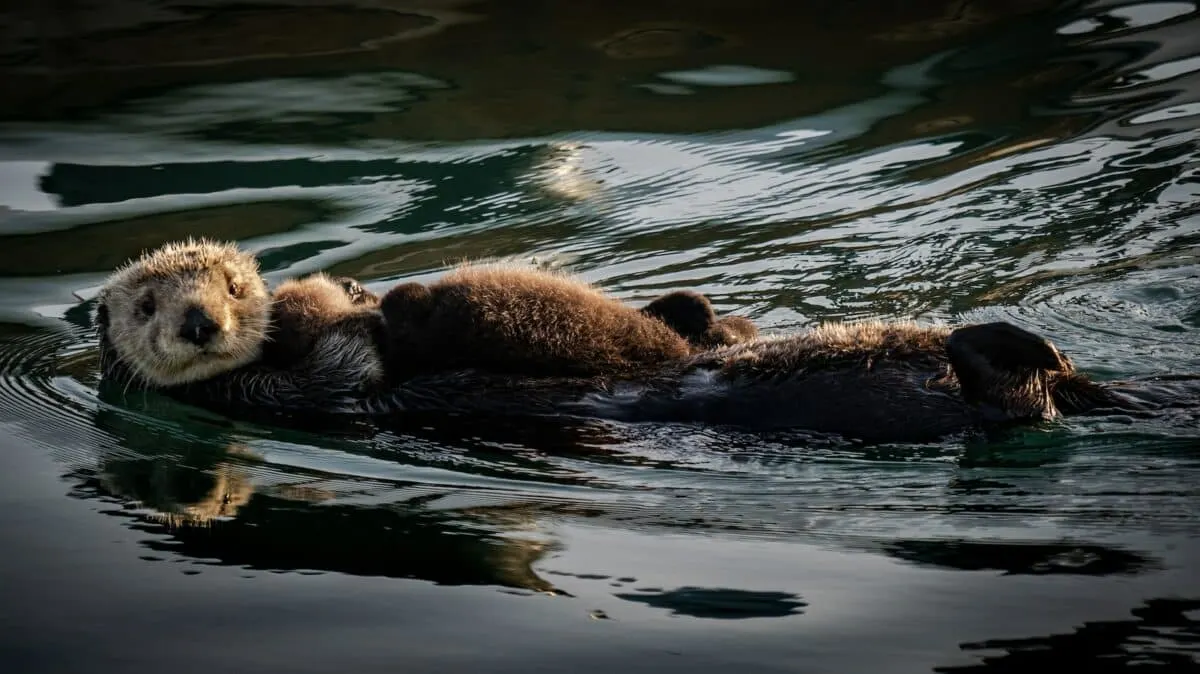Buckle up for a journey back in time with the gigantic prehistoric otter. As scientists from the University of Poitiers unveil the fascinating discovery of a colossal otter species, Enhydriodon omoensis, that once roamed the lands of Ethiopia between 3.5 and 2.5 million years ago. Imagine an otter the size of a modern lion, weighing a whopping 440 pounds, challenging our perceptions of these adorable aquatic creatures. This prehistoric giant, identified through meticulous research, presents a unique twist in the otter evolutionary saga, raising questions about its habitat, diet, and the mysteries surrounding its extinction.
Size and Location
Picture this – a colossal otter, dwarfing its contemporary relatives, with an estimated weight of 440 pounds. Enhydriodon omoensis was a true giant, redefining our understanding of otter sizes. Surprisingly, this massive creature wasn’t lurking in the waters but strode the ancient Ethiopian landscapes, showcasing a formidable terrestrial prowess. The fossil remains of this giant otter were discovered in Ethiopia, adding a fascinating chapter to the region’s paleontological history.
Background and Physical Characteristics
Traditionally classified as semi-aquatic, Enhydriodon otters were believed to thrive in African freshwater environments. However, the recently unearthed species challenges these assumptions. Its colossal size hints at a different lifestyle, one that wasn’t confined to aquatic habitats. The researchers, led by the University of Poitiers, utilized stable oxygen isotopes and carbon analysis in tooth enamel to unlock the secrets of its environment and diet. Astonishingly, E. omoensis exhibited a diet of terrestrial animals, deviating from the norm of modern otters. This revelation has left scientists intrigued about the evolution and adaptation of otters in ancient ecosystems.
Behaviour and Diet
Imagine a giant otter stalking through the grasslands, its massive frame concealing a skilled terrestrial predator. Contrary to the aquatic tendencies of contemporary otters, E. omoensis specialized in hunting terrestrial prey. The isotopic analysis of tooth enamel revealed a diet consisting of a diverse range of terrestrial plants, from tropical grasses to tree vegetation. This intriguing behavior challenges our understanding of otter evolution and adaptation, presenting a carnivorous giant that once ruled the ancient Ethiopian landscapes.
Lifespan and Extinction
Enhydriodon omoensis lived during a significant span between 3.5 and 2.5 million years ago. Thus, making it a key player in the prehistoric drama. The colossal otter’s existence raises questions about its role in ancient ecosystems and the factors that led to its eventual extinction about 200 million years ago. Scientists, fueled by curiosity, plan to delve deeper into the mysteries by examining a broader array of African otter fossils. Through the study of tooth enamel, bone structure, and shape, they aim to piece together the puzzle of these ancient giants. Thus, shedding light on their ecological significance and the events that marked their disappearance from the Earth’s stage.
The study was published in the journal Comptes Rendus Palevol.
Wrapping Up with the Gigantic Prehistoric Otter

As we unravel the mysteries of Enhydriodon omoensis, the colossal otter of ancient Ethiopia, we find ourselves captivated. Captivated by the sheer size and unexpected terrestrial habits of this prehistoric giant. The scientific journey, led by the University of Poitiers, serves as a reminder that our understanding of Earth’s history is ever-evolving. This discovery not only paints a vivid picture of a distant past but also sparks a curiosity. It propels scientists to dig deeper into the untold stories of Earth’s ancient inhabitants. The colossal otter was once a ruler of Ethiopian landscapes. Now it stands as a testament to the diversity. and surprises that await us in the vast tapestry of our planet’s history.
Thank you for following along with this article –
Next up in the animal kingdom:
Join our Forum for free today!

- Kind Elephant Merciful To Lion Cubs - July 22, 2024
- Beachgoers Save Massive Shark Stranded In Florida - July 22, 2024
- Pit Bull Rescued From Being Chained Its Whole Life Gets A Surprise - July 21, 2024

